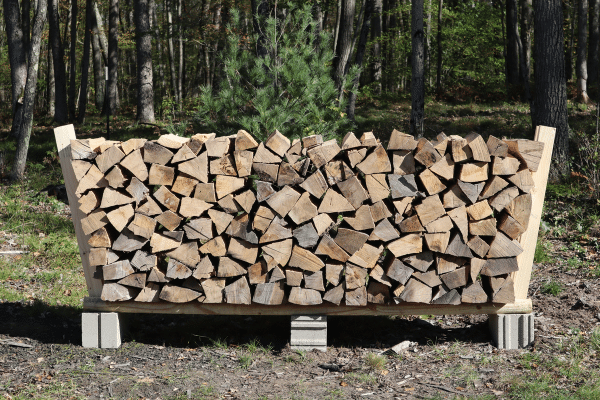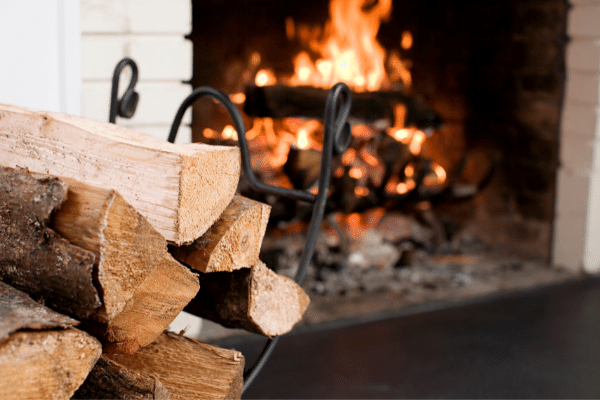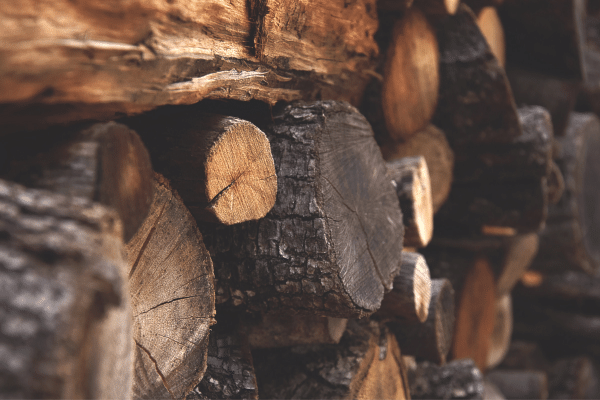- Home
- Types Of Firewood
- Is Mesquite Good Firewood
Is Mesquite Good Firewood?
This post may contain affiliate links so I earn a commission.
You know that mesquite wood, with its distinctive flavor, is commonly used in cooking as the smoke gives food a tangy taste, but is mesquite good firewood?
Burning mesquite as a food flavoring has been proven to be useful for centuries.
In addition, mesquite wood is excellent for furniture making and woodworking projects.
As a heat source, however, how does mesquite stack up?
Is mesquite good firewood?
Let’s find out.
The Mesquite Tree
In the tree world, mesquite is a bit of an oddity.
Scientists classify it as a “leguminous” tree, making it a cousin to other legumes, like lentils, lima beans, peanuts, and chickpeas.
Mesquite is technically a tree but, in many areas, it grows like a bush or shrub with more than one main trunk.
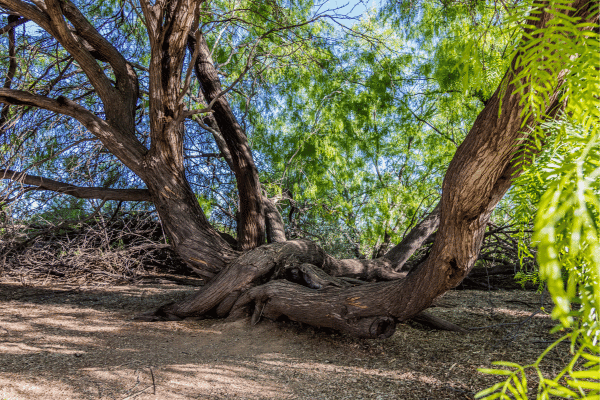
If it is
close to a consistent water source, a mesquite tree can grow up to 50 feet tall.
It is commonly found in the dry climate of southwestern United States and Mexico.
Because it often grows in desert habitats, the roots of the mesquite can be very long – up to 160 feet long – as the plant seeks out water deep beneath the surface.
Mesquites are hearty trees that enjoy an impressive longevity.
It's a deciduous tree that blooms in the late spring and produces a pod-like fruit.
The pods have been a food source for some Native American tribes, as well as for livestock and wild animals.
The seed pods are a good source of protein and fiber.
Mesquites blossoms attract bees and it’s one of the most important sources of nectar and pollen for honey bees in desert climates.
Mesquite wood is heavy, strong, and dense.
It doesn’t bow, split, or buckle so it has been traditionally used for woodworking, including furniture making.
Native Americans valued the strength of mesquite wood and used to craft their bows and arrows.
Even the thorns of the bush were used … they made excellent sewing needles.
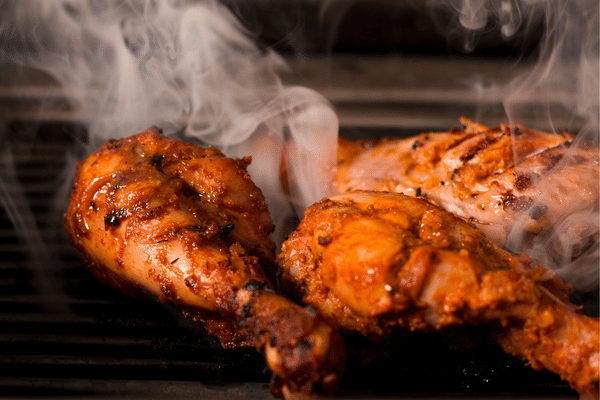
Mesquite, of course, is valued for its aroma.
People use mesquite shavings or wood chips to add a distinctive flavor to meat, fish, poultry, and even to vegetables.
It is especially prevalent in outdoor cooking, like grills, barbeque pits, and smokers.
Is Mesquite Good Firewood - Home Heating
Mesquite is prized for its pods, its use as a food flavoring, and for woodworking projects, but how about as a heat source?
Is mesquite a good firewood to burn to heat your home?
To answer these questions, let’s see how mesquite stacks up when we look at specific factors, like BTUs, smoke output, and ease of splitting.
Heat Output Of Mesquite
Heat output in firewood is measured in BTUs, or British Thermal Units.
One BTU is the amount of heat needed to increase the temperature of one pound of water by one degree Fahrenheit.
For firewood, the higher the BTU rating, the longer and hotter the wood will burn, making it a more efficient heat source.
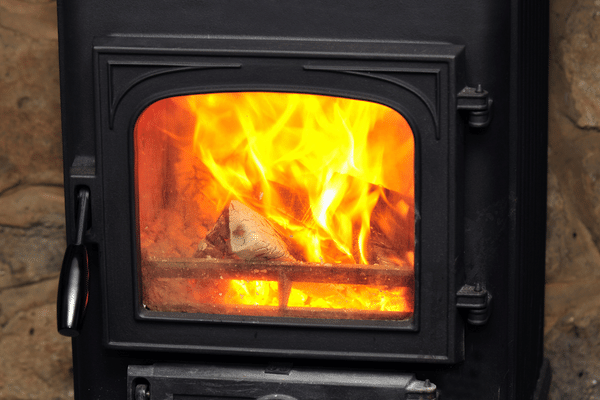
At 28 million BTUs per cord, Mesquite has a high BTU rating.
Mesquite firewood has a higher BTU than most of the favored firewood like oak, which has a 26.4 BTU, black walnut, with a 22.2 BTU, and sugar maple, which has a 24 BTU.
Mesquite is not the highest BTU firewood.
Osage orange and almond, both at 32.9 BTUs, and eucalyptus, at 34.5 BTUs, burn even hotter, but mesquite is on a par with beech and hickory.
Mesquite can burn so hot, in fact, that many websites caution against burning it in newer fireplaces.
The high heat from mesquite can damage modern fireplaces that are not designed for such high heats, compared to older, traditional brick or stone fireplaces.
Smoke Output
Mesquite has a fairly high smoke output.
Before you burn it, the wood should be thoroughly seasoned.
Excess moisture in the wood will increase the amount of smoke and taint the smell with a musty odor.
The aroma of mesquite diminishes as the wood ages.
If you find that heating your home with mesquite means you have to contend with strong odors, consider seasoning your wood longer.
Wood that has seasoned for 30 to 36 months will be less fragrant and more tolerable.
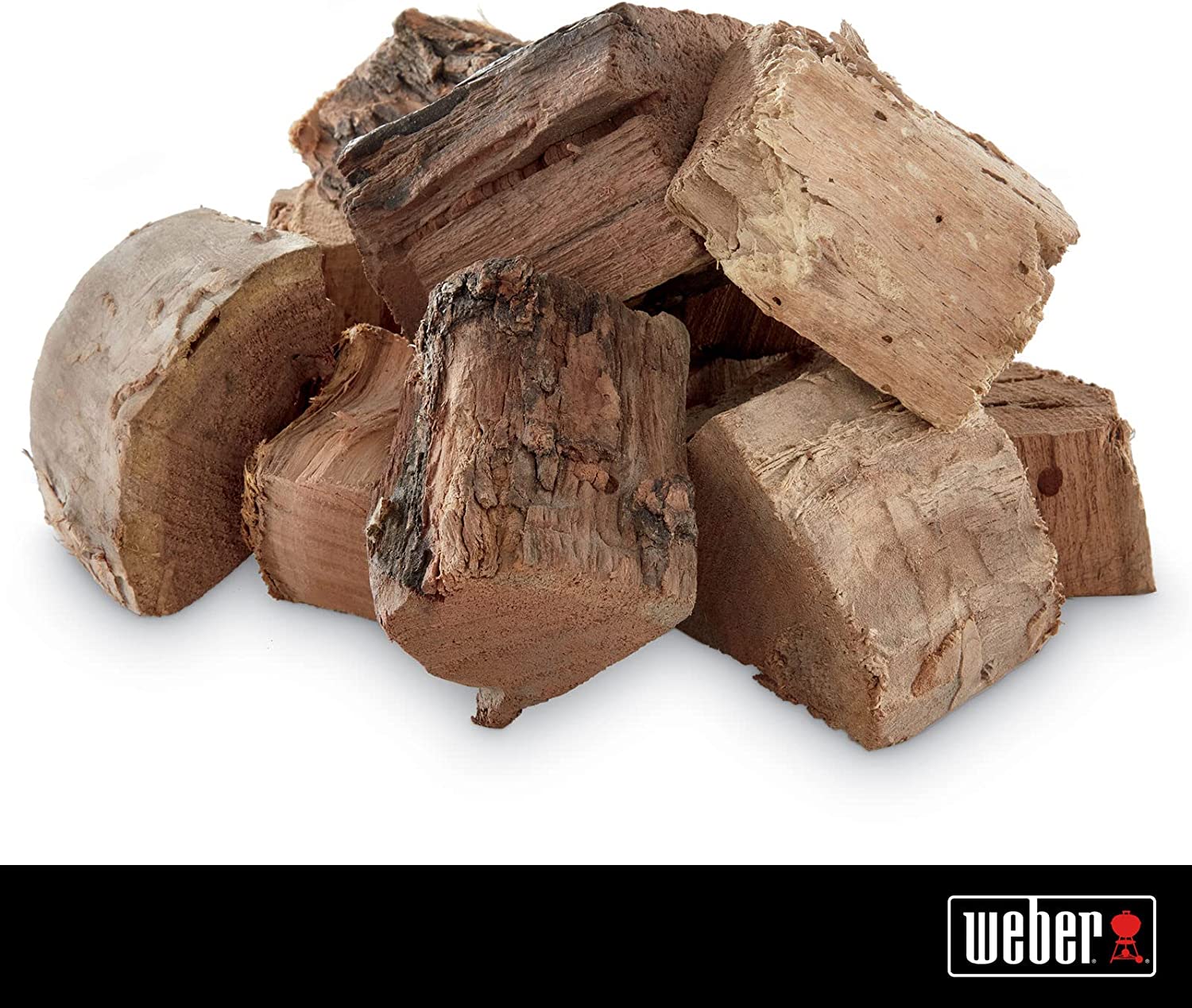
The
smell of mesquite wood, in general, is quite pleasing which is why it is prized
for smoking meats and as a food flavoring.
In your home, mesquite firewood will release a comforting smell when the wood is mixed with other firewood.
Burning mesquite in an open fireplace, however, may be too smoky.
People with allergies or sensitivity to smoke will be bothered by it.
In fact, it might even be too smoky for folks who can normally tolerate smoke well.
It might be better to save the mesquite firewood for wood stoves or outdoor wood furnaces.
Coaling
A good bed of coals will continue to produce heat long after the firewood has burned down, therefore wood varieties that produce good coals are desired.
Mesquite is one of the woods that is known for its coal production.
Oak, which has a slightly lower BTU than mesquite, actually is better in the coaling category than mesquite, but mesquite is a better option than ash for producing coals.
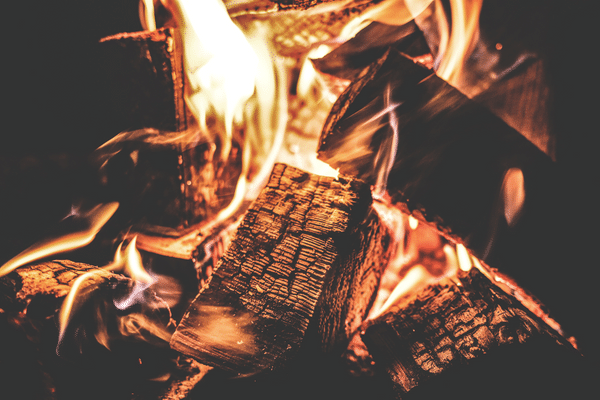
Sparking, Snapping, and Popping
Mesquite, when properly seasoned, doesn’t tend to release a lot of sparks when it is burned.
Sparks and pops can be a hazard for people heating with wood, especially when using an open fireplace.
Green, unseasoned mesquite, however, will provide more unwanted sparks.
Does Mesquite Firewood Create Creosote?
When wood is burned, the oils, saps, and resins in the wood are released as creosote in the smoke.
If the smoke lingers too long in your chimney and starts to cool, the smoke condenses and the creosote is deposited on the inside walls of the chimney.
Creosote, a thick, black, tar-like material, is highly flammable and a build up of creosote in your chimney can lead to chimney fires.
Mesquite, fortunately, is low in creosote.
Mesquite fires also typically burn hot enough that the smoke can escape the chimney before it cools enough for the creosote to build up on the chimney walls.
Unseasoned mesquite, however, is higher in creosote and will cause more build ups.
Either way, it is advised that you have your chimney cleaned and inspected on a regular basis to remove creosote build up and reduce the risk of fire.
How Long Does Mesquite Take To Season?
Mesquite grows in dry, desert climates so the wood does not normally contain a lot of water.
If you also live in a dry climate, the mesquite firewood you cut may be sufficiently seasoned in as little as six months.
If the wood is stored in a damper climate, a full twelve months’ seasoning time might be necessary for the wood to completely dry out.
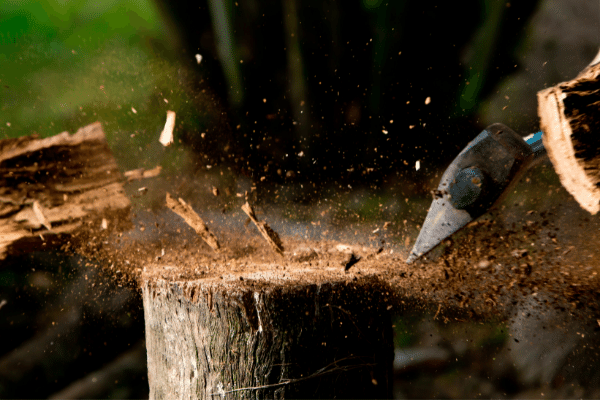
You
can speed along the drying time by splitting the firewood to increase the
surface area, stacking the pieces with gaps between the wood for increased air
flow, and by facing the stack of wood to catch the wind.
If you stack the mesquite wood on a pallet rather than directly on the ground, more air will be able to circulate under the wood which will dry it quicker.
Lastly, cover the top layer of wood to prevent the rain or snow from counteracting your efforts to dry out the wood.
Is Mesquite Good Firewood To Split?
When mesquite trees grow, they twist and turn and branch out into multiple main trunks.
The trees are interesting and unique to look at, but cutting and splitting the firewood can be challenging.
There are lots of smaller branches, so there will be a good amount of chainsaw work required.
In addition, the gnarls, crotches, and branches are particularly dense and hard.
Even the wood fibers are twisty and knotted.
Don’t be surprised when your chainsaw chain gets dull faster than you’re used to.
Cutting and splitting mesquite firewood with a splitting maul is a job for someone who is strong and physically fit.
For the rest of us, a good chainsaw and a hydraulic log splitter will save your back.
Insect Infestations
Bugs love mesquite wood, especially wood borers.
Inspect your wood piles regularly for signs of an insect infestation.
If not caught quickly, wood borers can quickly make sawdust out of your firewood.
Take steps to prevent insects from attacking your firewood by keeping the stacks away from trees and buildings and using pallets or a concrete slab instead of stacking the wood directly on the ground.
Is Mesquite Good Firewood - Overall
So how do all these factors add up?
Is mesquite good firewood?
The answer to that question is “Yes!”
With its high BTU rating, low creosote output, excellent coaling qualities, and low spark production, mesquite can be a quality, efficient source of fuel for homeowners who heat with wood.
However, mesquite is not the easiest wood to split, it produces a lot of smoke, and gives off a strong smell.
If you use an outdoor wood furnace, mesquite may be a better choice for you than for a homeowner who uses an open fireplace to heat their home.
A good compromise is to mix mesquite with other firewood.
